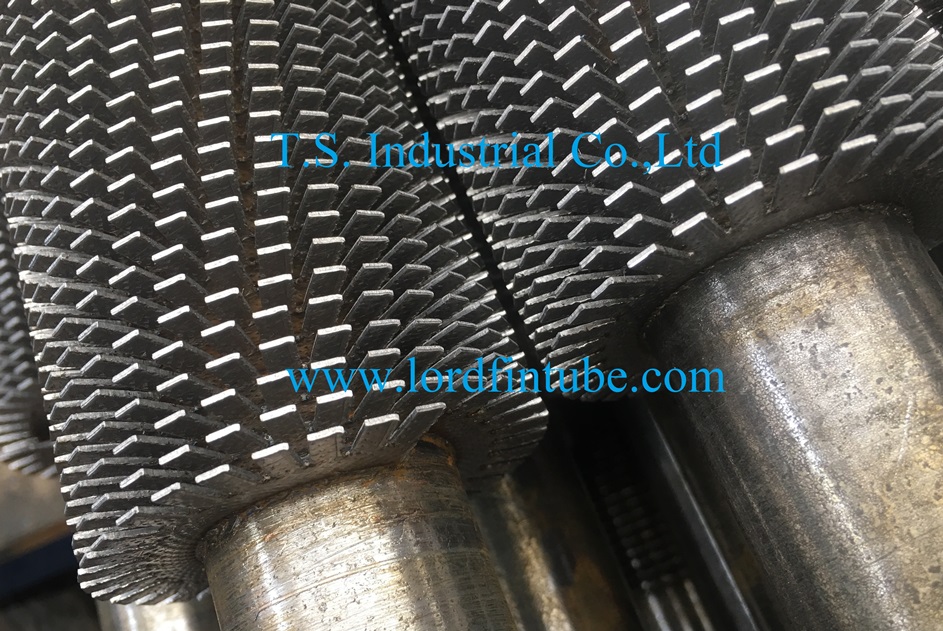Lord Fin Tube-I-type segmented finned tube
What is I-type segmented finned tube?
In the case of I-type segmented finned tubes, the fins are divided into segments that are arranged in an I-shaped pattern. This design provides several advantages, including better flexibility, reduced risk of fin damage during handling or thermal expansion, and improved heat transfer performance.
How to produce the I-type segmented finned tube?
An I-type segmented finned tube is disclosed having a fin composed of an elongated flat strip of metal, the upper portion of which forms the major fin portion having a plurality of segmented fins formed thereon and extending radially outward therefrom. The lower portion of the flat strip forms the base which serves as a contact area for a welding electrode. The method of bonding the segmented fin to the tube is accomplished by an ultra-high frequency welding process which melts the root portion of the fin and the registering surface of the tube just prior to their mutual engagement. A force is then applied to the tips of the fins at the point of mutual engagement to forge the molten root portion of the fin to the molten surface of the tube to create a fused bond therebetween.
What choose I-type segmented finned tube?
The conventional tubing having extended heat transfer surfaces in finned tubing is manufactured in a variety of configurations. Various type fins include:
(1) a flanged fin type in which a major fin portion has a bottom flanged base oriented perpendicular thereto;
(2) a channel fin type in which a continuous base has a pair of fin portions extending radially upward therefrom in a U-shaped configuration
(3) an I-type fin in which a flat fin portion has its lower edge forming the base for connection to the tube.
Although most of the above-mentioned finned tubing is commercially available, the U shaped finned tubing has not been used extensively because of various mechanical difficulties encountered in the manufacturing thereof.
As stated above, I-type segmented fins have heretofore been bonded to tubing by either a brazing or a welding process.
I-type segmented finned tube applications:
I-type segmented finned tubes are commonly used in various industries, including HVAC (heating, ventilation, and air conditioning), power generation, chemical processing, and refrigeration. They are particularly suitable for applications where heat transfer efficiency, durability, and maintenance ease are essential factors.
Various shortcomings are encountered in utilizing a brazing process. Because of the mechanical characteristics of a brazed bond most users prefer a welded bond for high temperature applications. Moreover, the brazing process used in the production of I-type segmented finned tubing is very time consuming and expensive.
Finned tube heat exchangers are used in a wide variety of applications for transferring heat from one source to another. For example, a plurality of tubes may be arranged within a casing in a parallel configuration for extracting heat from the hot exhaust gases of turbines. In this application water is normally circulated in the tubes while the hot exhaust gases are circulated over the external surface of the tubes. The hot water or steam generated is generally used for process plant requirements. Such exhaust heat recovery systerns almost invariably dictate the use of extended heat transfer surfaces. Finned tube heat exchangers are also extensively used in power generation, such as boilers and economizers. In some such applications it is desirable to make the finsthicker in order to have the finned tubes positioned closer to the radiant section of the exchanger.


